
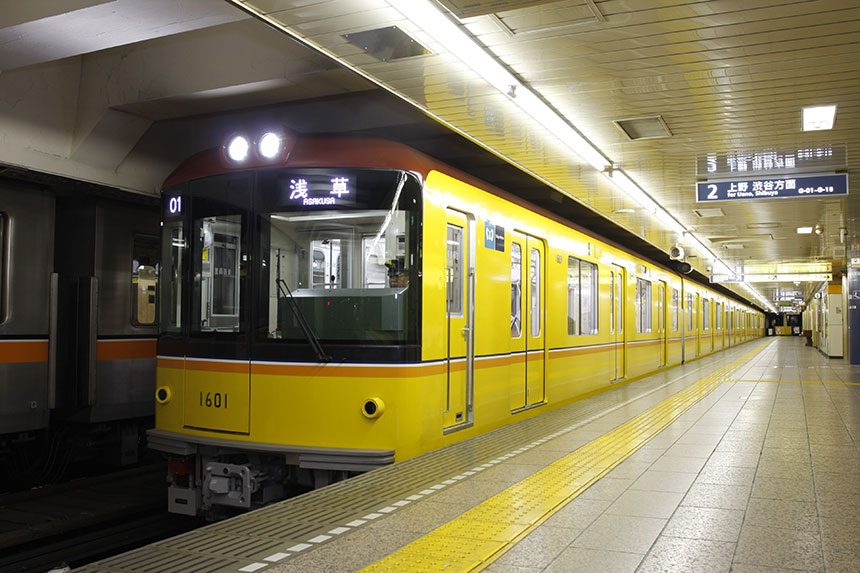 Image credit: Tokyo Metro
Image credit: Tokyo MetroGetting around in Tokyo, a city so modern and futuristic, is not easy for tourists and travelers.
The main challenge with transportation in Tokyo is that it has a dense, sophisticated network of train, subway and bus lines. And those lines are being operated by about a dozen different companies.
The fact that Tokyo is one of the most populous cities in the world also make it complicated for tourists to get around in Tokyo.
That’s why learning about Tokyo’s day passes and pre-paid cards, as well as ways to get around in the city is essential before you arrive in Tokyo.
See also: Best Ways to Get from Haneda Airport to Central Tokyo
See also: Best Ways to Get from Narita Airport to Central Tokyo
There are about a dozen of different tourist passes, tickets and cards available in Tokyo. However, most of them are overpriced and don’t work on all of the city’s subway, train and bus lines.
Introduced below are the two transport cards and two most useful tourist passes.
SUICA AND PASMO CARDS

There are two types of transport cards in Tokyo: SUICA and PASMO, which are belongs to two different companies but have same functions. Both can be bought at the airport as well as subway and train stations.
The initial purchase of both SUICA and PASMO ranges from 1,000 yen ($9.54) to 10,000 yen ($95), both can be used on all subways, trains and buses, and both include a 500 yen ($4.82) deposit that will be refunded when the card is returned.
The remaining amount from the deposit can be immediately used for rides around the city and you can easily load your card up with more money via card vending machines at subway and train stations.
Although neither SUICA nor PASMO give you any discounts, they give you convenience while getting around in Tokyo, compared to single ride tickets, as all you have to do to access stations is to simply swipe the card over a card reader.
TOURIST PASSES
There are also two types of passes that are helpful and cost-effective if you’re planning to use Tokyo’s public transportation a lot in one or two days.
– Tokyo Furii Kippu (aka Tokyo Tour Ticket), which costs 1,590 yen ($15.32), gives you unlimited access to all Tokyo’s subway lines operated by Toei and Tokyo Metro as well as all JR trains for one day. Bonus: it can also be used on Toei’s buses and streetcars.
– Tokyo Subway Ticket, which costs 800 yen ($7.71), gives you unlimited access to all Tokyo’s subway lines operated by Toei and Tokyo Metro for 24 hours, but isn’t valid on JR trains. 48-hour and 72-hour tickets are also available at 1,200 yen ($11.49) and 1,500 yen ($14.36) respectively.
Other day passes and tickets available in Tokyo provide you with 24-hour unlimited use on only certain subway, train and bus lines, which is why we don’t recommend them for travelers.
COIN-OPERATED LUGGAGE LOCKERS
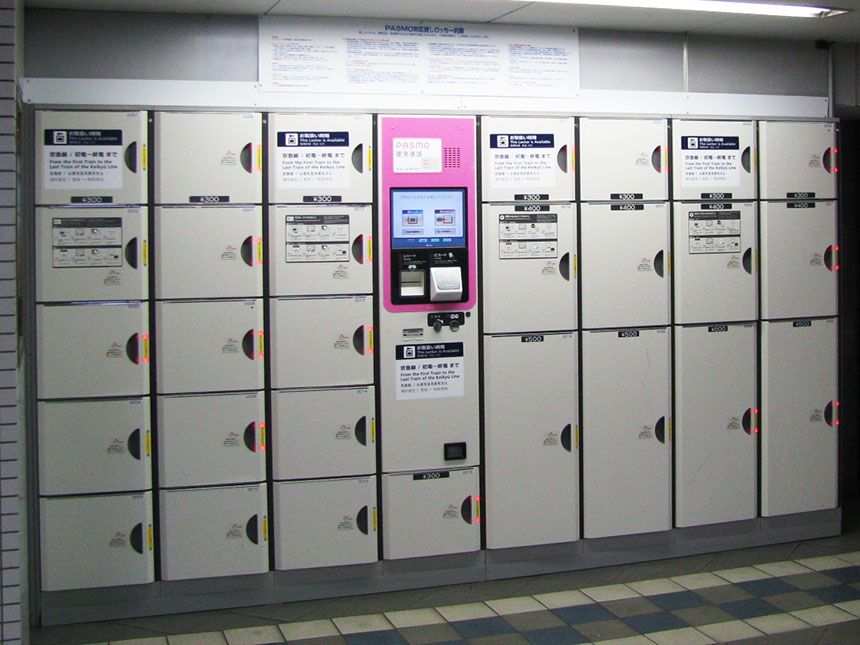
(Image credit: Vantey)
If you’re a traveler visiting Tokyo with tons of luggage (or even a small backpack) and you want to travel light around the city, there is a great option for you: coin-operated luggage lockers.
You can find those convenient and affordable boxes at every train station and at some malls, stores and even tourist attractions.
Prices for renting a luggage locker range from 100 yen ($0.96) to 500 yen ($4.82) per day, depending on the size of the locker. Small 100-yen lockers are best suited for one or two small luggage pieces, while the big 500-yen locker can fit a medium-sized suitcase.
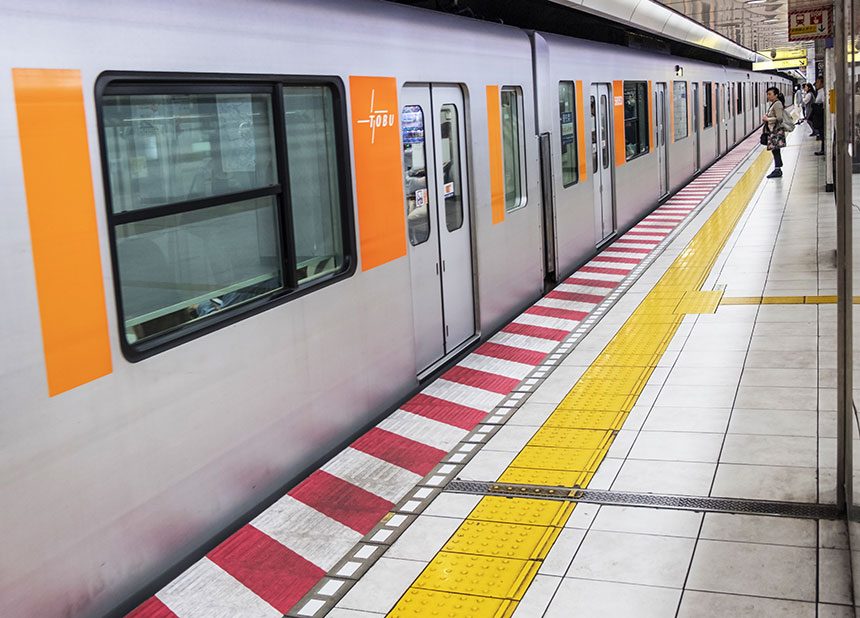 Image credit: akulamatiau
Image credit: akulamatiauTokyo has one of the most dense and sophisticated mass transit systems in the world. And while this system may be confusing for tourists, it’s still one of the most efficient ways to get around in Tokyo.
In fact, buses in Tokyo are even more confusing than trains, especially if you don’t know Japanese. So taking a train or subway is the faster and easier way to reach any destination in Tokyo.
Don’t be surprised when you see about a dozen of white-gloved ‘pushers’ (oshiya–train station assistant), who squeeze passengers into train cars during rush hours.
While it may seem a little wild for most foreigners, Tokyo residents don’t mind being squeezed into train cars.
Tokyo’s mass transit system can be broken down into three parts:
JR Yamanote Loop
JR Yamanote loop line is the most important and most used line in Tokyo. The line runs in a circle and connects the city’s major centers.
The line has 29 stations, but the most popular ones are:
Train & Subway service hours: 04:26 – 01:18 daily (JR East trains) and around 05:00 – 00:00 daily (subway)
Train & Subway service schedule: Every 3 minutes during rush hours and every 4 – 5 minutes during off-rush hours
Train & Subway fares
– Tokyo Metro subway fares start at 170 yen ($1.56), follow this link to calculate fares
– Toei subway fares start at 190 yen ($1.74)
– JR trains fares start at 130 yen ($1.19)
Notes
– If you’re planning to travel around Tokyo a lot using trains and subways in a few days, consider purchasing one of day passes or tickets mentioned in our BEFORE YOU GET STARTED IN TOKYO section above.
– See full subway and train map here
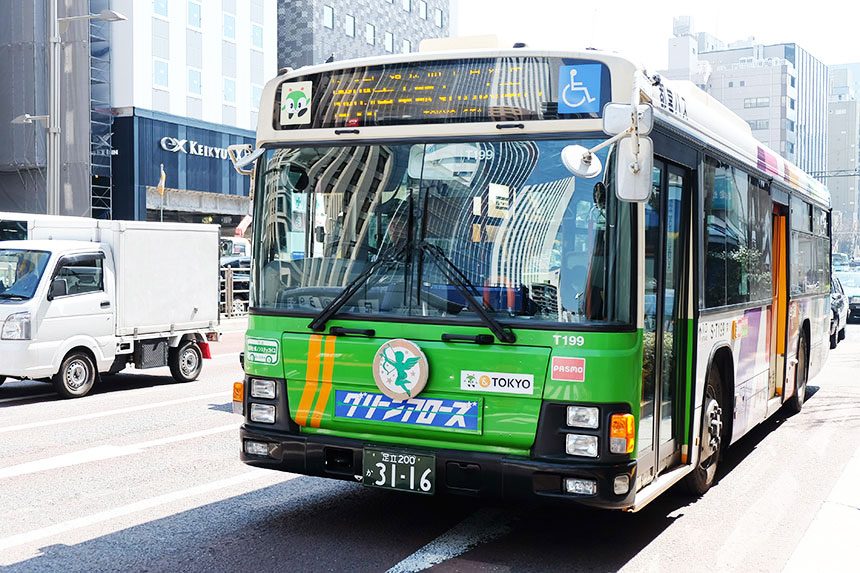 Image credit: ponsulak
Image credit: ponsulakUsing a bus to get around in Tokyo is not as practical as using trains and subways for a number of reasons:
However, buses in Tokyo are useful for their north-south routes on the western side of Tokyo, where trains mostly run east-west.
Just like trains and subways, buses tend to get crowded during rush hours, but there are no pushers (who squeeze you into buses).
Bus hours: 07:00 – 23:00 daily, but there are also night buses on some routes
Bus schedule: Every 10 minutes during rush hours, every 15-20 minutes during off-rush hours
Bus fares: Most local buses in Tokyo charge a flat fee of 210 yen ($1.92) for a ride
Notes
– Pay upon boarding the bus. Most buses accept SUICA and PASMO cards.
– Most buses have priority seats for the pregnant, elderly, disabled, injured as well as people with small kids
– In order to get off at your stop, push a button on the side of the door or ceiling
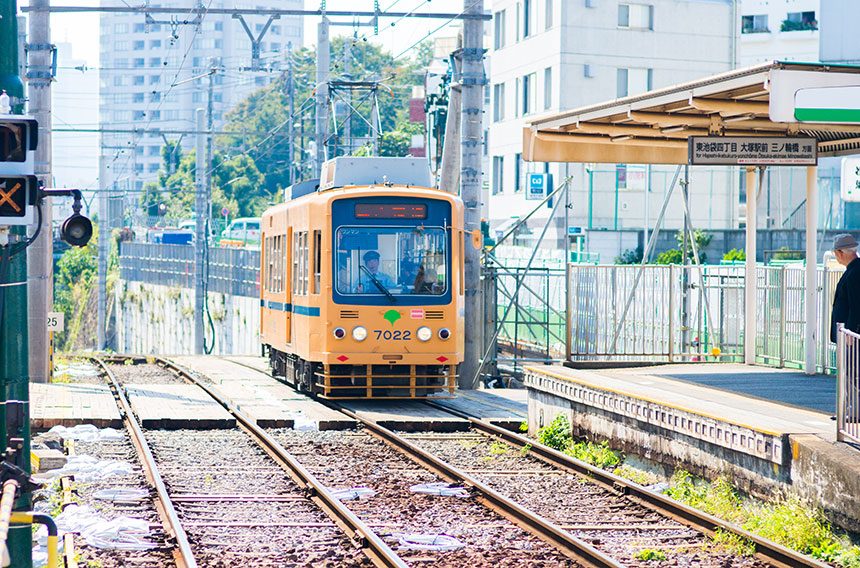 Image credit: yokokenchan
Image credit: yokokenchanThere are two streetcar (also known as tram) lines in Tokyo, in which the more popular one is Toden Arakawa Line, running through northern and eastern Tokyo outside the main tourist areas. There are 30 stops along its route, from Waseda to Minowabashi and vice versa.
Although you won’t get far using a streetcar in Tokyo, it’s still a fun way to reach some of the city’s crucial parts:
Streetcar hours: 05:40 – 23:00 daily
Streetcar schedule: Every 7 minutes during rush hours; every 10 to 15 minutes during off-rush hours
Streetcar fares: Flat fare 170 yen ($1.64) regardless of distance for one ride, and 400 yen ($3.82) for the one-day economy pass, which allows unlimited use of the streetcar for one day
Paying streetcar fares
– Buy the ticket (one-use or one-day ticket) on the streetcar from a conductor when you get on the streetcar for the first time
– If you have the one-day ticket, every time you get on the streetcar, all you have to do is just show the ticket to the conductor
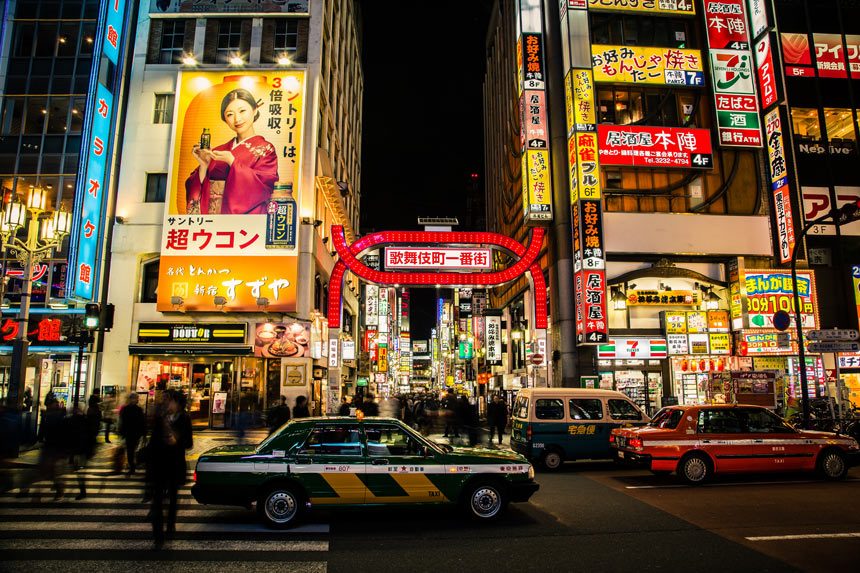 Image credit: Richard Schneider
Image credit: Richard Schneider Taking a taxi ride to get around in Tokyo is very expensive but it can be convenient if you’re traveling with a group of friends or your family.
It’s actually the most expensive way to get around in Tokyo and can be useful only to those who don’t want to waste their time figuring out how other modes of public transportation in Tokyo work.
For example, a simple 8km ride from Tokyo Station to Shinjuku would cost you about 3,000 yen ($27.44) using a taxi, while you’d pay only 200 yen ($1.93) for the same trip using a JR train or subway.
Most taxi drivers in Tokyo don’t speak English, so it’s recommended to have your destination written in Japanese on a piece of paper.
Taxi hours: 24 hours
Taxi fares: Start at 730 yen ($7) for the first 2 km and add up as you go (90 yen, $0.87 per every subsequent 280 m)
Notes
– Fares increase by 20% in the period between 22:00 and 05:00
– Tokyo’s taxi rear left passenger doors are automatically operated by the driver, so you don’t need to open or close them by yourself
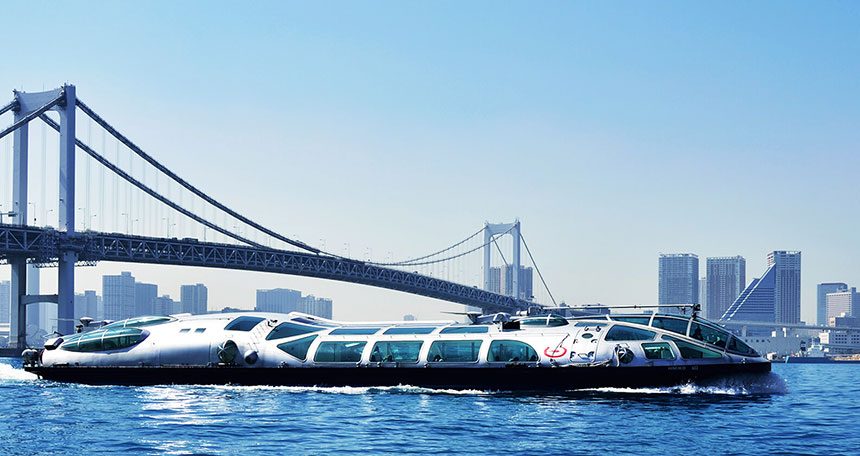 Image credit: Tokyo Cruise Ship
Image credit: Tokyo Cruise ShipTokyo Cruise Ship operates a number of water bus ferries along the Sumida River and in Tokyo Bay, connecting Asakusa, Hinode, Harumi and Odaiba.
Taking a water bus ferry is definitely not a practical way to get around in Tokyo, but nonetheless it’s a great way to explore Tokyo’s mesmerizing waterfront areas.
Each ferry is equipped with English and Japanese tour announcements. It’s a must to take a ride on the super-futuristic Himiko ferry (see above photo), which was designed by manga and anime creator Leiji Matsumoto.
Waterbus hours: 09:50 – 18:40 daily (some routes finish earlier)
Waterbus schedule: Every 15 to 45 minutes
Waterbus fares: Start at 780 yen ($7.5)
Notes
– You can find the Himiko ferry on the Asakusa-Odaiba and Asakusa-Toyosu routes
– To check waterbus timetable and fares, follow this link
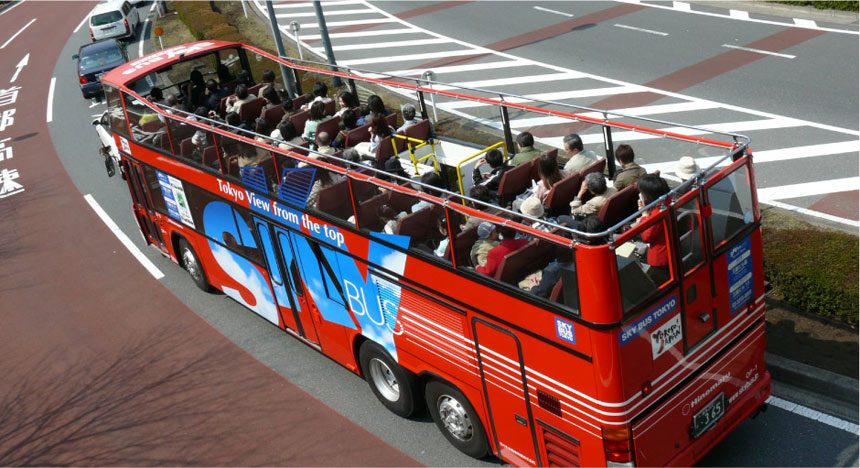 Image credit: Sky Bus Tokyo
Image credit: Sky Bus TokyoTokyo has two types of Hop On Hop Off Buses: Sky Hop Bus and Sky Bus Tokyo, both operated by Skybus company.
Sky Hop Bus offers sightseeing trips with multiple stops along the way and has three courses:
Sky Bus Tokyo, meanwhile, makes no stops along the way and all sightseeing is conducted from within the bus.
You can get your Hop On Hop Off Bus ticket at Marunouchi Mitsubishi building, which is just a 1 minute walk from Tokyo Station.
Service hours
– Sky Bus Tokyo: 10:00 – 17:00 daily
– Sky Hop Bus: 10:00 – 18:00 daily
Service schedule: Hop On Hop Off Buses depart every 1 to 2 hours
Fares: 1,600 yen ($15.4) for one Sky Bus Tokyo trip and 3,500 yen ($33.7) 24-hour access to all Sky Hop Bus trips
Note: Each Sky Bus Tokyo tour’s duration is approx. 50 minutes
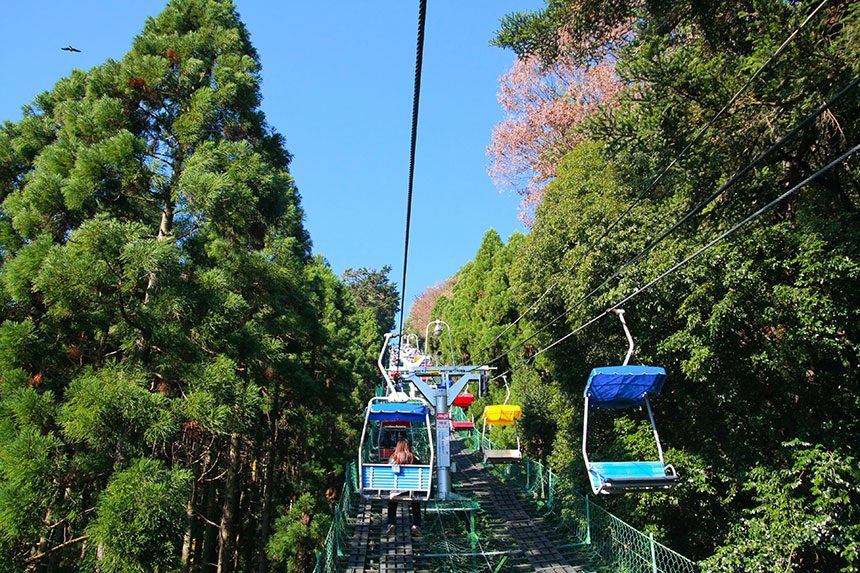 Image credit: suchi187
Image credit: suchi187Mount Takao (Takaosan) is a wonderful natural recreation area that isn’t far away from central Tokyo. Every traveler coming to Tokyo must visit Mount Takao to explore the beautiful scenery and take a ride on the cable car or chair lift.
There are two ways to get to Mount Takao: by a cable car or chair lift. The entrances to both are located close together and can be accessed at Takaosanguchi rail station (Keio Takao Line).
Service hours: 08:00 – 17:45 daily (cable car) and 09:00 – 16:30 daily (chair lift)
Service schedule: Every 15 minutes
Fares: Cable Car and Chair Lift have the same fares, 480 yen ($4.58) for one-way and 930 yen ($8.88) for round-trip